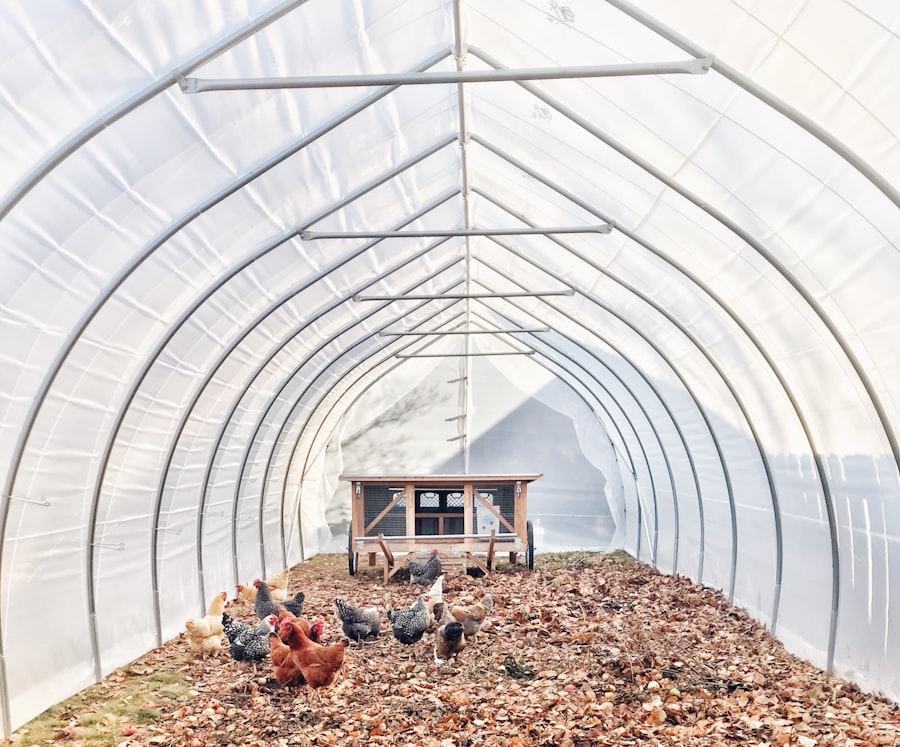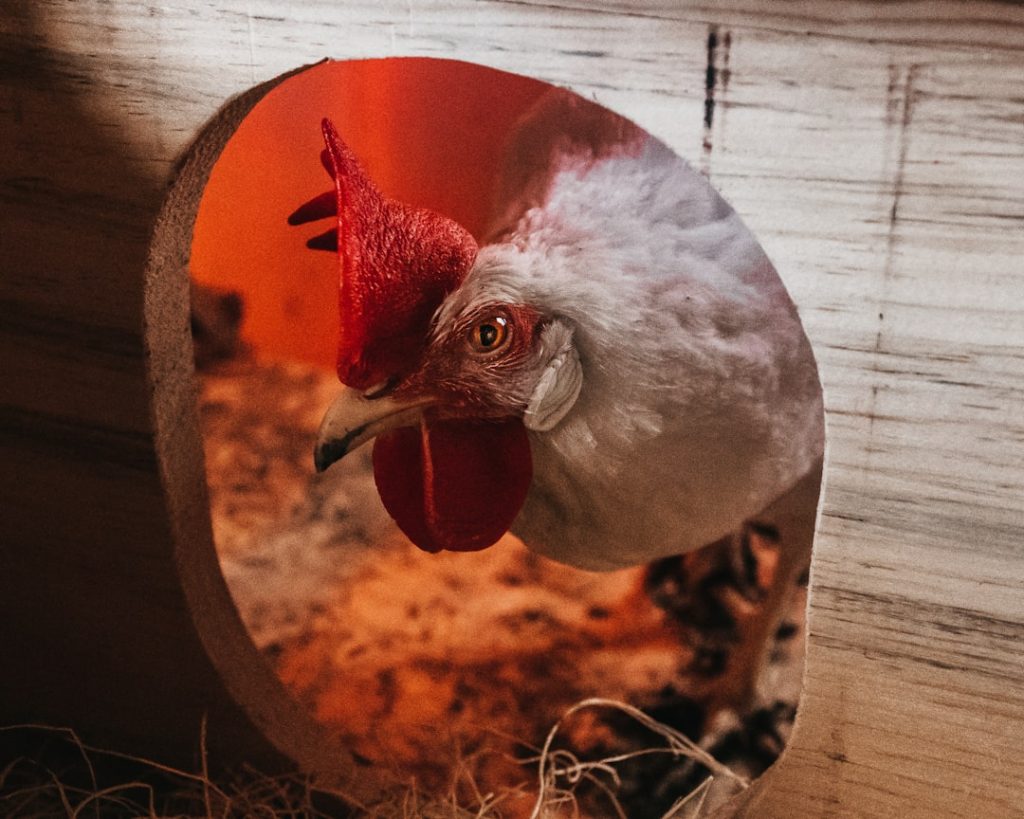Light plays a crucial role in chicken egg production and overall poultry health. It acts as a signal to the hen’s reproductive system, stimulating hormone release that regulates the laying cycle. Insufficient light can lead to reduced or ceased egg production, which is particularly significant in commercial operations where consistent, high yields are essential for profitability.
Natural light exposure benefits chickens by regulating their circadian rhythms, promoting vitamin D synthesis, and encouraging physical activity. These factors contribute to the overall health and well-being of the birds. Light is also vital for chick embryo development during incubation.
Proper light exposure ensures the growth of healthy chicks. Understanding and managing both natural and artificial light cycles is crucial for optimizing egg production and maintaining chicken welfare. In commercial settings, farmers often use artificial lighting to extend daylight hours, particularly during seasons with shorter natural light periods.
This practice helps maintain consistent egg production throughout the year. However, it’s important to balance artificial lighting with periods of darkness to allow for proper rest and natural behaviors. The intensity, duration, and spectrum of light can all impact egg production and chicken health.
Red light, for example, has been shown to stimulate egg production, while blue light can affect growth and behavior. Farmers and researchers continue to study the optimal lighting conditions for various breeds and production systems to maximize both productivity and animal welfare.
Table of Contents
- 1 Understanding the Natural Light Cycle for Chickens
- 2 How Many Hours of Light Do Chickens Need to Keep Laying?
- 3 Using Artificial Light to Extend Daylight Hours for Chickens
- 4 Potential Risks and Considerations of Using Artificial Light for Chickens
- 5 Monitoring and Adjusting Light Exposure for Optimal Egg Production
- 6 Best Practices for Providing Light to Chickens for Laying
- 7 FAQs
- 7.1 What is the ideal amount of light for chickens to keep laying eggs?
- 7.2 How long should I leave the light on for my chickens?
- 7.3 What type of light should I use for my chickens?
- 7.4 Are there any negative effects of leaving the light on for chickens too long?
- 7.5 Can I use a timer for the chicken coop light?
Key Takeaways
- Adequate light is crucial for chicken egg production
- Chickens rely on natural light cycles for their reproductive and laying patterns
- Chickens need around 14-16 hours of light per day to maintain egg laying
- Artificial light can be used to extend daylight hours and stimulate egg production
- Risks of using artificial light for chickens include stress and potential health issues
Understanding the Natural Light Cycle for Chickens
The Impact of Daylight Hours on Egg Production
As the days grow longer in the spring and summer, hens experience an increase in daylight hours, which stimulates their reproductive systems and encourages them to lay eggs. Conversely, as the days grow shorter in the fall and winter, the decrease in daylight hours signals to hens that it is time to reduce or cease egg production.
The Importance of Light Quality
In addition to the length of daylight hours, the quality of light also plays a role in regulating chicken behavior and physiology. Natural sunlight provides a full spectrum of light, including ultraviolet (UV) rays, which are important for vitamin D synthesis and overall health.
Replicating Natural Light Conditions
Therefore, replicating natural light conditions as closely as possible is crucial for maintaining the well-being and productivity of chickens. Understanding how natural light influences chickens is essential for effectively managing their light exposure to optimize egg production.
How Many Hours of Light Do Chickens Need to Keep Laying?

The number of hours of light required to stimulate egg production in chickens varies depending on several factors, including breed, age, and environmental conditions. In general, most laying hen breeds require a minimum of 14-16 hours of light per day to maintain consistent egg production. This mimics the longer daylight hours experienced during the spring and summer months when hens naturally lay more eggs.
However, it is important to note that excessive light exposure can also have negative effects on chicken welfare and health. Younger hens that have just reached laying age may benefit from slightly longer light exposure to encourage early onset of egg production. On the other hand, older hens may require a gradual reduction in light exposure as they approach the end of their laying cycle.
It is crucial to monitor and adjust light exposure based on the specific needs of the flock to ensure optimal egg production while prioritizing the well-being of the birds. Additionally, providing a consistent and predictable light schedule can help reduce stress and maintain a sense of routine for the chickens.
Using Artificial Light to Extend Daylight Hours for Chickens
In situations where natural daylight hours are insufficient to maintain consistent egg production, artificial lighting can be used to supplement and extend the daily light exposure for chickens. This practice is commonly employed in commercial egg production facilities, where maximizing egg yields is essential for profitability. By strategically installing artificial lights in chicken coops or barns, producers can effectively simulate longer daylight hours and encourage hens to continue laying eggs throughout the year.
When using artificial lighting, it is important to consider the quality and intensity of the light source. Full-spectrum lighting that closely mimics natural sunlight is preferred, as it provides a balanced spectrum of visible light and includes UV rays necessary for vitamin D synthesis. Additionally, ensuring that the lighting is evenly distributed throughout the coop or barn helps prevent uneven exposure and potential stress on the birds.
Careful consideration should also be given to the timing and duration of artificial light exposure to align with the natural sunrise and sunset patterns, promoting a more gradual transition between light and dark periods.
Potential Risks and Considerations of Using Artificial Light for Chickens
While artificial lighting can be a valuable tool for extending daylight hours and maintaining egg production, there are potential risks and considerations that should be taken into account. Excessive or poorly managed artificial light exposure can disrupt the natural circadian rhythms of chickens, leading to stress, reduced immune function, and behavioral issues. It is important to strike a balance between providing enough light to stimulate egg production and allowing for periods of darkness for rest and recuperation.
Furthermore, reliance on artificial lighting may mask underlying health issues or environmental stressors that could impact egg production. It is essential to address any underlying factors that may be affecting egg production before resorting to artificial lighting as a solution. Additionally, energy costs associated with running artificial lights should be carefully considered, especially for small-scale producers or those operating in off-grid locations.
Implementing energy-efficient lighting solutions and utilizing timers or sensors to control light exposure can help mitigate these concerns.
Monitoring and Adjusting Light Exposure for Optimal Egg Production

Monitoring Laying Patterns and Behavior
Any changes in egg production or abnormal behavior should prompt a reassessment of their lighting conditions and potential environmental stressors.
Adjusting Light Exposure
Adjusting light exposure may involve gradually increasing or decreasing the duration of artificial lighting based on seasonal changes or specific needs of the flock. For example, during the winter months when natural daylight hours are shorter, gradually extending artificial lighting in the morning and evening can help maintain consistent egg production. Conversely, reducing artificial lighting during periods of extreme heat or other environmental stressors can help alleviate potential strain on the birds.
Importance of Natural Sunlight
In addition to managing artificial lighting, providing access to natural sunlight whenever possible is beneficial for chicken welfare. Allowing chickens outdoor access during daylight hours enables them to engage in natural behaviors such as dust bathing, foraging, and sunbathing, which contribute to their overall well-being. By carefully monitoring and adjusting light exposure, producers can optimize egg production while prioritizing the health and welfare of their chickens.
Best Practices for Providing Light to Chickens for Laying
In conclusion, light plays a critical role in chicken egg production and overall welfare. Understanding the natural light cycle for chickens and how to effectively supplement it with artificial lighting is essential for maintaining consistent egg yields while prioritizing the well-being of the birds. Providing a minimum of 14-16 hours of light per day is generally necessary to stimulate egg production in laying hens, but careful monitoring and adjustment based on specific flock needs are crucial.
When using artificial lighting, it is important to consider factors such as light quality, intensity, timing, and duration to ensure that it closely mimics natural sunlight patterns. Additionally, potential risks associated with excessive artificial light exposure should be carefully considered, and efforts should be made to provide access to natural sunlight whenever possible. By implementing best practices for providing light to chickens for laying, producers can optimize egg production while promoting the health and welfare of their flocks.
Regular monitoring and adjustment of light exposure based on seasonal changes and specific flock needs are essential for achieving optimal results. Ultimately, a balanced approach that considers both the biological needs of chickens and practical considerations related to artificial lighting will contribute to successful egg production and overall flock well-being.
If you’re wondering how long to leave the light on for your chickens to keep them laying, you may also be interested in learning about the importance of having a heater for your chicken coop. According to Poultry Wizard, providing a heater in the coop can help keep your chickens warm and comfortable during colder months, which can in turn help maintain egg production.
FAQs
What is the ideal amount of light for chickens to keep laying eggs?
Chickens typically need 14-16 hours of light per day to continue laying eggs consistently.
How long should I leave the light on for my chickens?
If natural daylight is not sufficient, you can use artificial light to supplement the chickens’ light exposure, leaving the light on for 14-16 hours per day.
What type of light should I use for my chickens?
It is recommended to use a red or pink light bulb, as this color spectrum is less likely to disrupt the chickens’ natural sleep patterns.
Are there any negative effects of leaving the light on for chickens too long?
Leaving the light on for chickens for more than 16 hours per day can disrupt their natural sleep patterns and may lead to stress and health issues.
Can I use a timer for the chicken coop light?
Yes, using a timer can be a convenient way to ensure that the chickens receive the appropriate amount of light each day without having to manually turn the light on and off.
Meet Walter, the feathered-friend fanatic of Florida! Nestled in the sunshine state, Walter struts through life with his feathered companions, clucking his way to happiness. With a coop that’s fancier than a five-star hotel, he’s the Don Juan of the chicken world. When he’s not teaching his hens to do the cha-cha, you’ll find him in a heated debate with his prized rooster, Sir Clucks-a-Lot. Walter’s poultry passion is no yolk; he’s the sunny-side-up guy you never knew you needed in your flock of friends!







